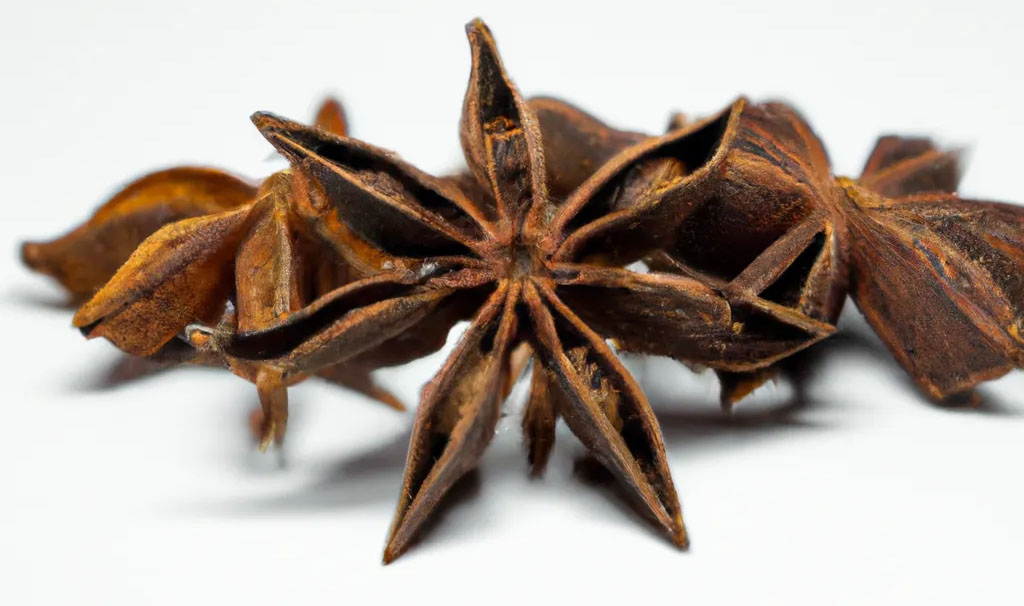Botanical Name: Illicium verum
Star anise, an eight-pointed star-shaped spice, is one of the most distinctive and beautiful spices in the culinary world. Native to southern China and Vietnam, star anise is highly prized for its intense, warm, and licorice-like flavor, similar to that of anise but stronger and slightly sweeter. Its name comes from its striking star-shaped pods, which contain small seeds that are typically used whole or ground in both savory and sweet dishes. While its aesthetic appeal is undeniable, star anise’s true value lies in its versatility in the kitchen.
The flavor of star anise is dominated by anethole, the same compound responsible for the licorice taste found in fennel and anise. However, star anise has a deeper, more robust flavor profile with hints of warmth and sweetness. Its intensity makes it a common ingredient in spice blends and a powerful flavor enhancer in a variety of dishes.
One of the most iconic uses of star anise is in Chinese cuisine, where it is a key component of the famous five-spice powder, along with clove, cinnamon, Sichuan peppercorns, and fennel seed. This blend is widely used to flavor meats, particularly pork and duck, where the rich, spicy notes of star anise pair beautifully with the fatty, savory flavors of the dish. Star anise is often added to slow-cooked dishes such as braised meats, stews, and soups, where its flavor can infuse into the broth or sauce, giving it a distinctive aromatic quality.
In Vietnamese cuisine, star anise is a crucial ingredient in pho, the country’s beloved noodle soup. The spice is simmered with other aromatics like cinnamon, ginger, and clove, creating the soup’s fragrant broth. The balance of these spices, particularly the sweet, licorice-like notes of star anise, gives pho its characteristic depth of flavor.
Star anise also shines in desserts and sweet applications, particularly in Western baking. It can be used to flavor poached fruits, spiced cakes, and holiday cookies. The spice’s complex sweetness makes it an excellent pairing for fruits such as pears, plums, and apples. In Europe, star anise is often used to flavor mulled wine, cider, and other warm drinks, imparting its sweet-spicy aroma to festive beverages during the holiday season.

